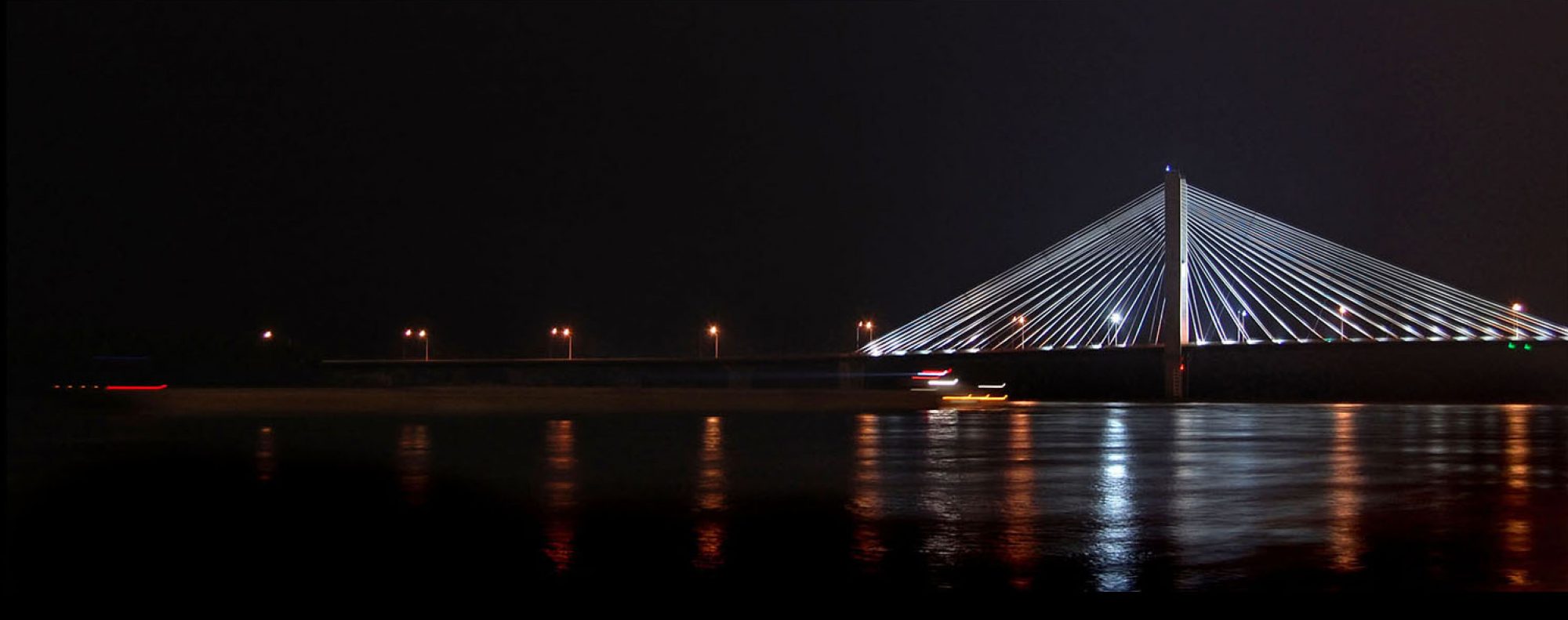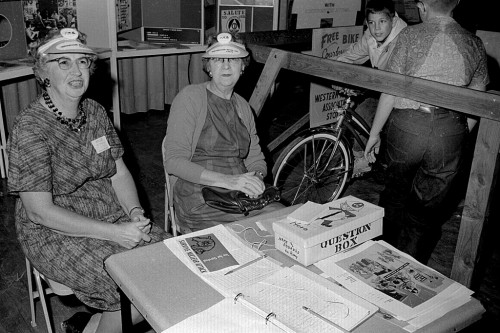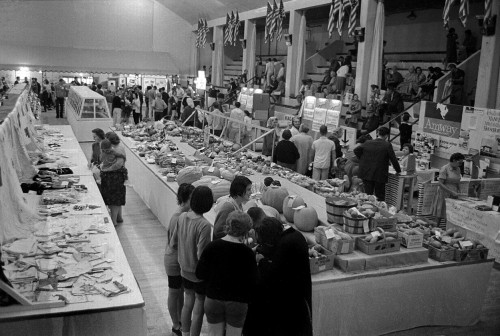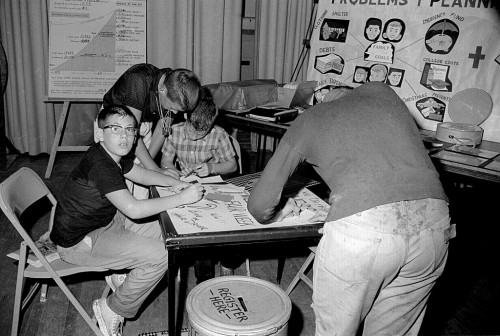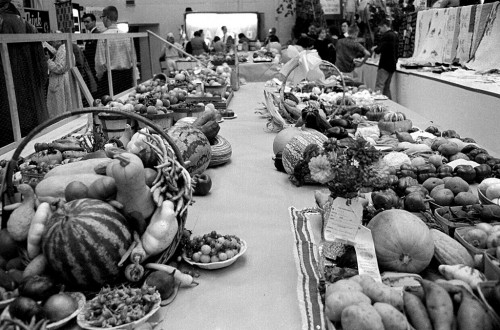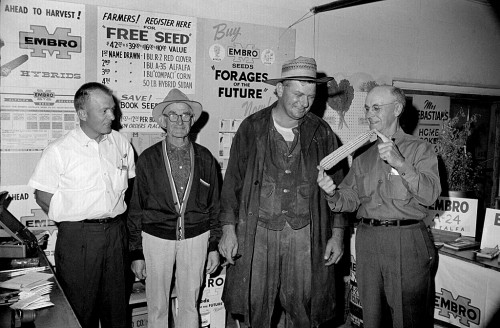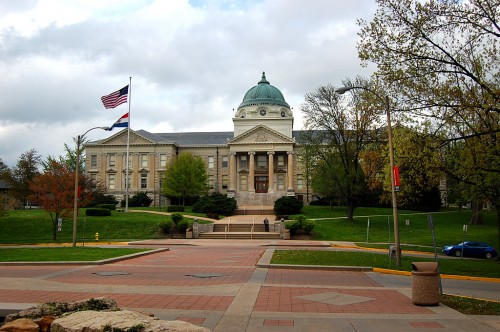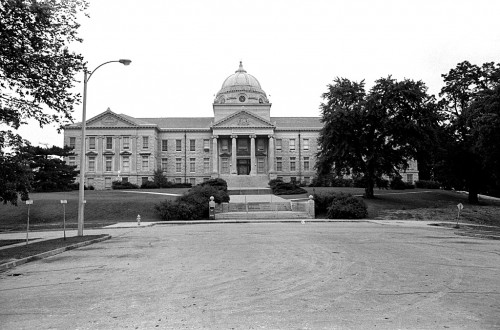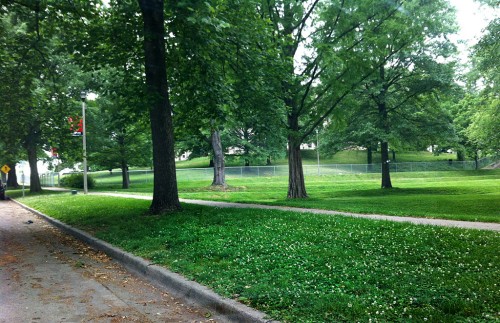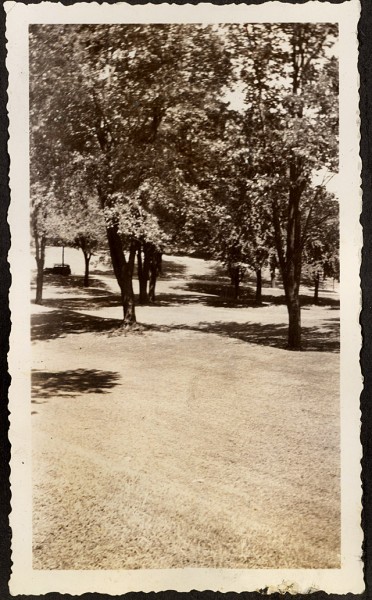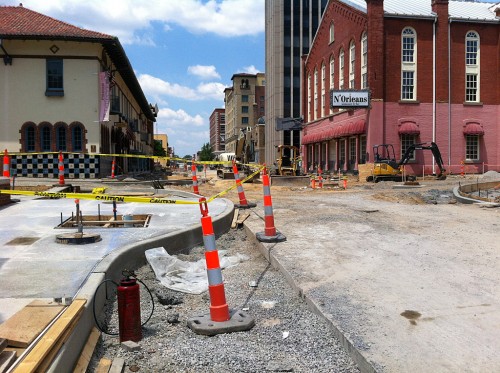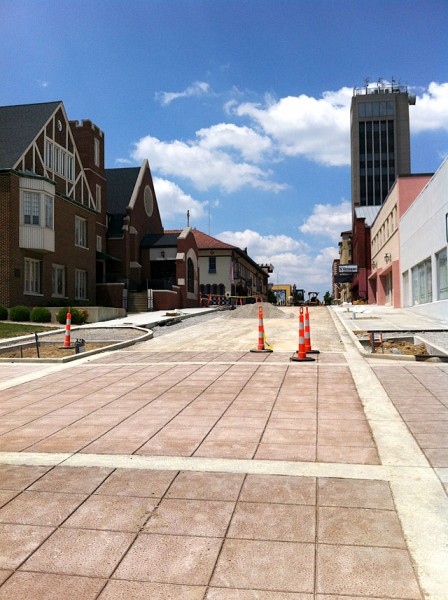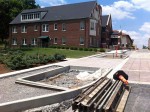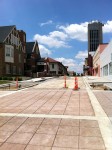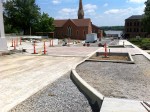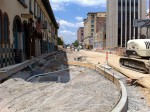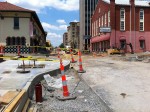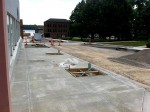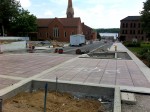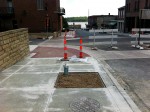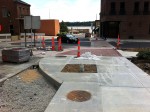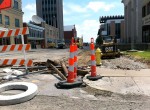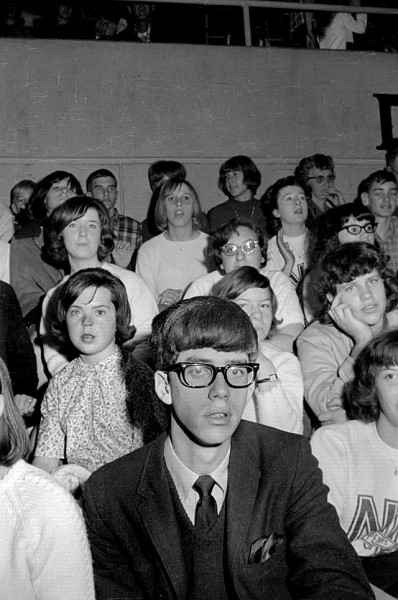 I couldn’t figure out what my old debate partner Pat Sommers was up to. He was in what appeared to be Houck Field House spiffed up in a coat and tie. Check out his front pocket. He was pulling out all the stops. You CAN click on the photo to make it larger, but I’m not sure how much Pat you really want to see.
I couldn’t figure out what my old debate partner Pat Sommers was up to. He was in what appeared to be Houck Field House spiffed up in a coat and tie. Check out his front pocket. He was pulling out all the stops. You CAN click on the photo to make it larger, but I’m not sure how much Pat you really want to see.
Now that I think of it, Pat always dressed out of the ordinary. He wore dark sunglasses to a showing of the Beatles movie Help! At least he behaved more appropriately here than he did in this photo. Here’s what a modern version of Pat looks like.
Christmas Tournament
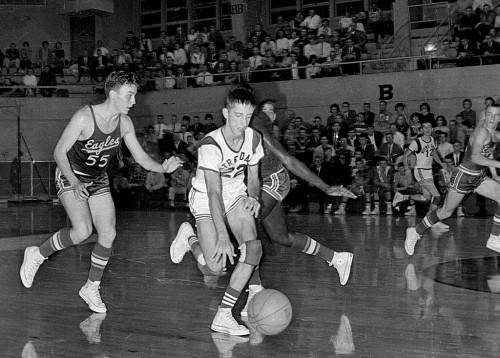 The next frame showed basketball action between Notre Dame and the Eagles. That led me to believe that it was taken during the Christmas tournament that brought mixes of teams to Houck Field House. Pat wasn’t the only one who dressed up. If you look at the crowd, there’s a pretty good scattering of ties. I wonder if high school kids still dress up for basketball games.
The next frame showed basketball action between Notre Dame and the Eagles. That led me to believe that it was taken during the Christmas tournament that brought mixes of teams to Houck Field House. Pat wasn’t the only one who dressed up. If you look at the crowd, there’s a pretty good scattering of ties. I wonder if high school kids still dress up for basketball games.
Happy New Year
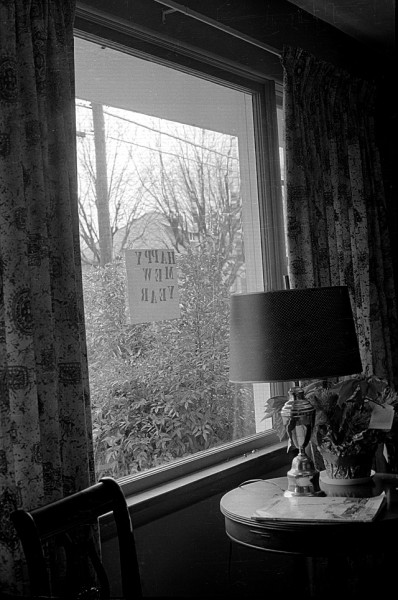 Helping confirm the time of year was a frame on the roll that had a hand-stenciled Happy New Year sign taped to the Steinhoff living room window.
Helping confirm the time of year was a frame on the roll that had a hand-stenciled Happy New Year sign taped to the Steinhoff living room window.
